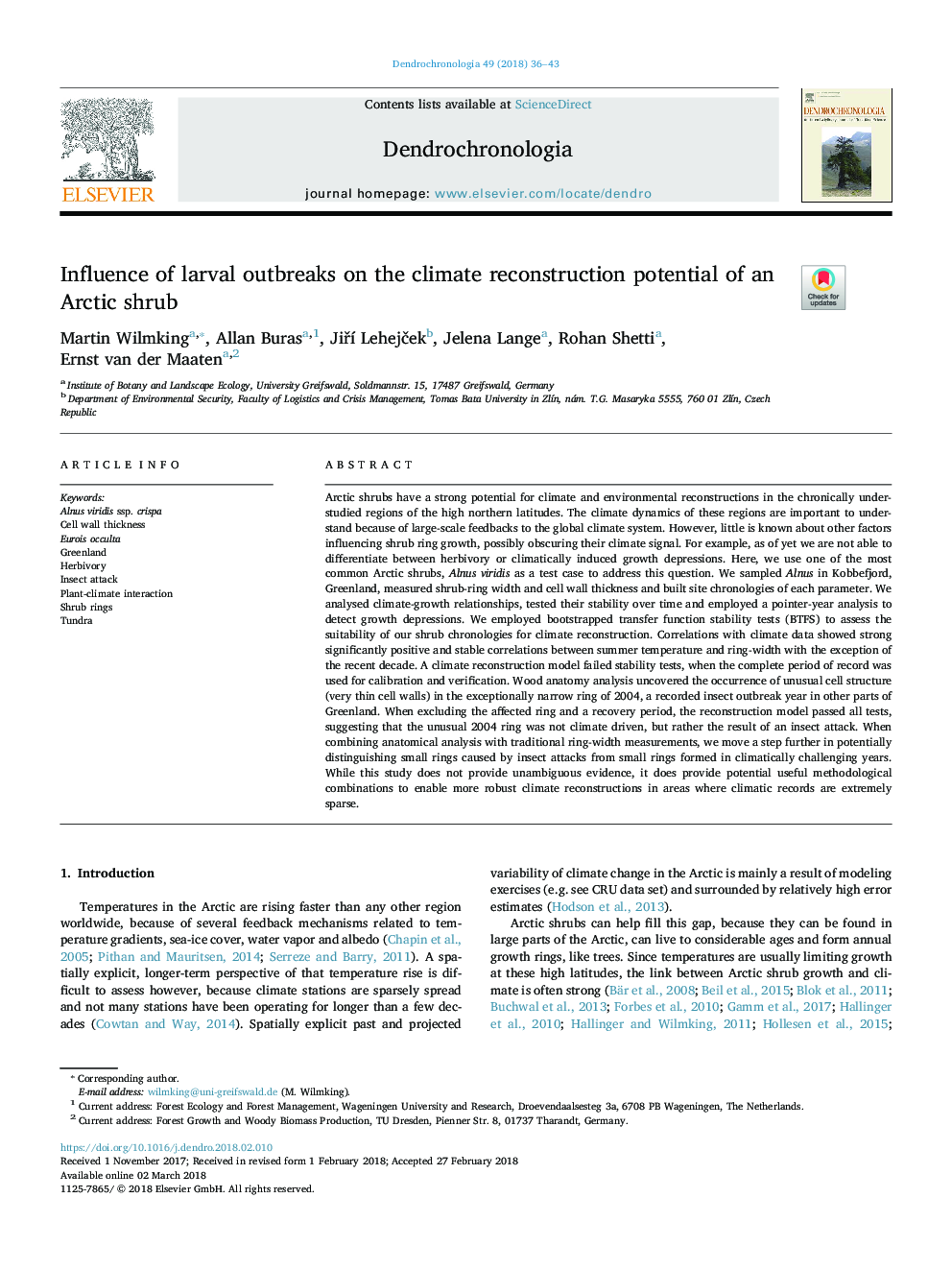| کد مقاله | کد نشریه | سال انتشار | مقاله انگلیسی | نسخه تمام متن |
|---|---|---|---|---|
| 6541254 | 1421192 | 2018 | 8 صفحه PDF | دانلود رایگان |
عنوان انگلیسی مقاله ISI
Influence of larval outbreaks on the climate reconstruction potential of an Arctic shrub
ترجمه فارسی عنوان
تاثیر شیوع لاروها بر پتانسیل بازیافت آب وهوای درختچه قطب شمالی
دانلود مقاله + سفارش ترجمه
دانلود مقاله ISI انگلیسی
رایگان برای ایرانیان
کلمات کلیدی
موضوعات مرتبط
مهندسی و علوم پایه
علوم زمین و سیارات
علم هواشناسی
چکیده انگلیسی
Arctic shrubs have a strong potential for climate and environmental reconstructions in the chronically understudied regions of the high northern latitudes. The climate dynamics of these regions are important to understand because of large-scale feedbacks to the global climate system. However, little is known about other factors influencing shrub ring growth, possibly obscuring their climate signal. For example, as of yet we are not able to differentiate between herbivory or climatically induced growth depressions. Here, we use one of the most common Arctic shrubs, Alnus viridis as a test case to address this question. We sampled Alnus in Kobbefjord, Greenland, measured shrub-ring width and cell wall thickness and built site chronologies of each parameter. We analysed climate-growth relationships, tested their stability over time and employed a pointer-year analysis to detect growth depressions. We employed bootstrapped transfer function stability tests (BTFS) to assess the suitability of our shrub chronologies for climate reconstruction. Correlations with climate data showed strong significantly positive and stable correlations between summer temperature and ring-width with the exception of the recent decade. A climate reconstruction model failed stability tests, when the complete period of record was used for calibration and verification. Wood anatomy analysis uncovered the occurrence of unusual cell structure (very thin cell walls) in the exceptionally narrow ring of 2004, a recorded insect outbreak year in other parts of Greenland. When excluding the affected ring and a recovery period, the reconstruction model passed all tests, suggesting that the unusual 2004 ring was not climate driven, but rather the result of an insect attack. When combining anatomical analysis with traditional ring-width measurements, we move a step further in potentially distinguishing small rings caused by insect attacks from small rings formed in climatically challenging years. While this study does not provide unambiguous evidence, it does provide potential useful methodological combinations to enable more robust climate reconstructions in areas where climatic records are extremely sparse.
ناشر
Database: Elsevier - ScienceDirect (ساینس دایرکت)
Journal: Dendrochronologia - Volume 49, June 2018, Pages 36-43
Journal: Dendrochronologia - Volume 49, June 2018, Pages 36-43
نویسندگان
Martin Wilmking, Allan Buras, JiÅÃ LehejÄek, Jelena Lange, Rohan Shetti, Ernst van der Maaten,
